Thermal expansion treatments for seamless steel pipes are categorized into overall thermal expansion, surface thermal expansion, and chemical heat treatment. Thermal expansion treatment for
seamless steel pipes generally utilizes overall thermal expansion. These treatments typically involve heating, holding, and cooling, all of which can potentially result in defects.
Heat treatment defects in seamless steel pipes primarily include substandard microstructure and performance, oversized pipes, surface cracks, scratches, severe oxidation, decarburization, overheating, and overburning.
Process Characteristics of Thermal Expansion for Seamless Steel Pipes:
The first step is heating: one involves heating below the critical point Ac1 or Ac3; the other involves heating above the critical point Ac1 or Ac3. The first step primarily stabilizes the seamless steel pipe's microstructure and eliminates residual stresses, while the second primarily austenitizes the steel.
The second step is holding: its purpose is to uniformly maintain the heating temperature across the seamless steel pipe to achieve a suitable heated microstructure.
The third step is cooling: the cooling process is a critical step in the heat treatment of seamless steel pipes, determining their metallographic structure and mechanical properties after cooling. In actual production, a variety of cooling methods are used for seamless steel pipes. Commonly used cooling methods include furnace cooling, air cooling, oil cooling, polymer cooling, and water cooling.
Depending on the heating temperature and cooling rate of seamless steel pipes, they are categorized into normalizing, annealing, tempering, quenching, and other processes.
Normalizing: Refines austenite grains, homogenizes the internal structure, and modifies the residual stress state, thereby improving the overall performance of seamless steel pipes. It reduces banding and mixed crystals formed during deformation (but does not eliminate banding caused by segregation and inclusions in the steel); eliminates network carbides in hypereutectoid steel, facilitating spheroidizing annealing. It is used as a pretreatment before quenching for medium-carbon steel and alloy structural seamless steel pipes to refine grains and achieve uniform structure, reducing defects in the seamless pipes caused by the quenching process. It can also be used as a final heat treatment for low-carbon and low-alloy seamless steel pipes, replacing annealing to improve the cutting performance of seamless pipes.
Annealing: This process is divided into recrystallization annealing, full annealing, isothermal annealing, spheroidizing annealing, and residual stress relief annealing. Generally, high-carbon, low-alloy, and alloy steel seamless pipes require annealing to reduce hardness and strength, improve plasticity, eliminate internal stress and structural inhomogeneities, and refine the crystal structure to facilitate machining and prepare for the final heat treatment of the seamless pipe.
Tempering is generally divided into low-temperature tempering (150-250°C), medium-temperature tempering (350-500°C), and high-temperature tempering (500-650°C). It improves the plasticity and toughness of seamless pipes, imparts excellent overall mechanical properties, reduces or eliminates residual stress generated during quenching, and stabilizes the pipe's dimensions, ensuring that the pipe does not change during use. Tempering is generally performed using air cooling. To prevent the regeneration of internal stress in the seamless pipe, slow cooling is recommended. For seamless pipes susceptible to high-temperature temper brittleness, rapid cooling, such as oil cooling, should be used after tempering.
Quenching: The process of heating a metal material to 30-50°C above the austenite Ac3 line, holding it for a period of time, and then rapidly cooling the seamless steel pipe to produce martensite or bainite. Quenching seamless steel pipes generates thermal and structural stresses, which can generally be eliminated and improved through tempering. The combination of quenching and tempering (tempering) can significantly improve the overall performance of the steel.
Other processes include solution treatment and shielding gas
heat treatment.
Heat Treatment Defects and Their Prevention
Unsatisfactory Microstructure and Properties of Seamless Steel Pipes: After austenitization, seamless steel pipes can produce pearlite, bainite, or martensite, depending on their carbon content and cooling rate. Improper control of the thermal expansion process can result in the formation of Widmanstätten structure, a type of overheated structure. This can negatively impact the overall performance of seamless steel pipes (which excel in high-temperature durability), reducing their room-temperature strength and increasing their brittleness. Lighter Widmanstätten structures can be eliminated by normalizing at an appropriate temperature, while heavier Widmanstätten structures can be eliminated by secondary normalizing. The first normalizing temperature is higher, while the second normalizing temperature is lower. This also serves to refine the grain size.
The Transformation to Tillage (TTT) curve and the Continuous Cooling Transformation (CCT) curve are important criteria for determining the cooling rate during heat treatment.
Seamless Steel Pipe Dimensional Unqualified
After heat treatment, seamless steel pipes may, in some cases, experience significant dimensional changes, resulting in out-of-tolerance variations in outer diameter, ovality, and curvature. This typically occurs during the quenching process. Tempering is often followed by a sizing step. Ovality changes in seamless steel pipes typically occur at the ends of the pipes, primarily due to "burning" of the pipe ends during prolonged heating of large-diameter, thin-walled seamless pipes.
Generally, bends in seamless steel pipes can be corrected using straightening machines. Large bends can make seamless pipes difficult to transport, and the straightening process generates significant straightening stresses. This can severely reduce the seamless steel pipe's collapse resistance and corrosion resistance. Worse still, the seamless steel pipe can crack or break during the straightening process.






 English
English Español
Español بالعربية
بالعربية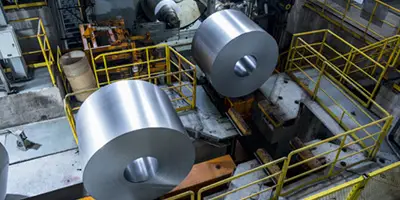
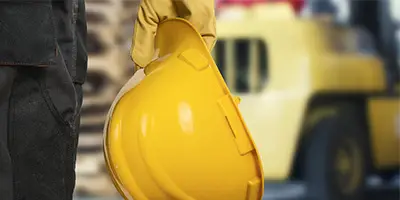
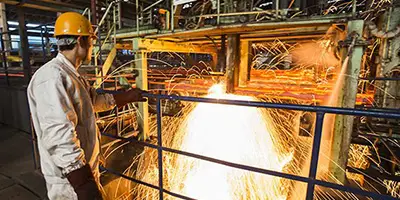
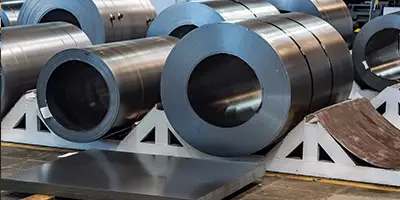

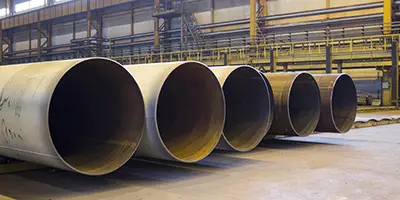
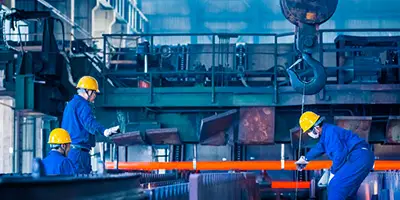
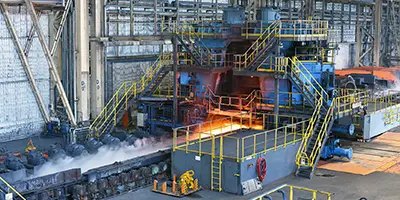
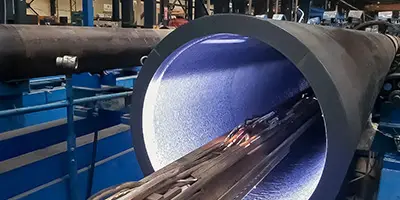
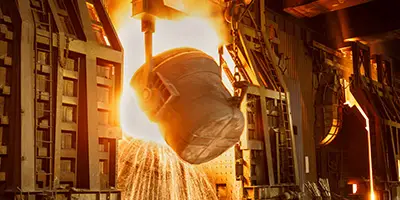
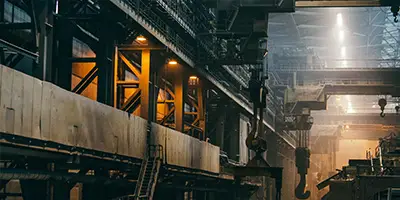
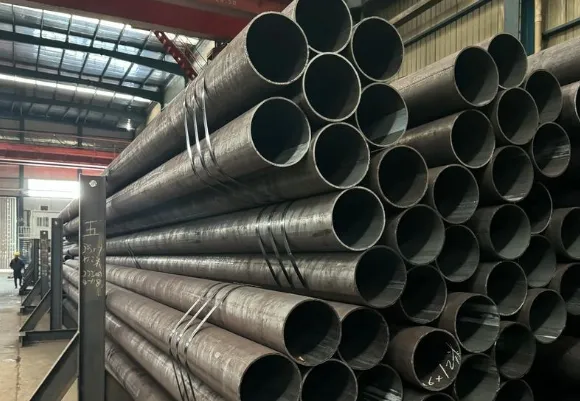
 Phone :
Phone :  Whatsapp :
Whatsapp :  Email :
Email : 


